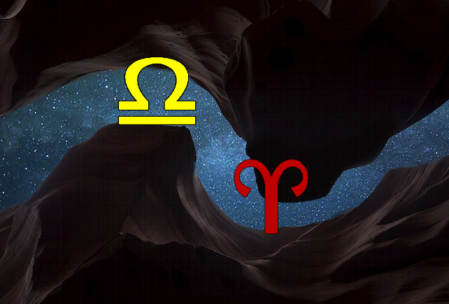EQUINOX (Ostara & Mabon)

WHAT ARE THE EQUINOXES (EQUINOCTES)
Astronomically, the equinoxes mark the points where the sun crosses the celestial equator, rising from south to north in the spring, and setting from north to south in the fall.
Metaphorically and mythologically, the equinoxes mark the points where polarities meet face to face. Where light is forced to look its shadow in the eye and choose what comes next.
There are two equinoxes in the year (as there are two solstices) but, while they both mark a meeting point between light and dark, their energies are very different. The meetings themselves actually represent a balance – one being energetic and aggressive (Ostara in the Spring) where the other is peaceful and passive (Mabon in the Fall).
At Ostara (Sun in Aries), Day confronts Night with a fighting spirit which culminates in a victory and heralds the birth of new life. On the other hand, at Mabon (Sun in Libra), Day and Night great each other in mutual respect for the opposing roles they play in the continuous cycling of the Wheel of the Year. Day accepts its own passing and the dying light graciously, infusing the Autumnal Equinox with harmony, balance, and co-operation.
WHY NOT EQUI-DIES?
The time when day and night are equal is referred to as “equinox” meaning “equal night”. But, given society usually focuses more on the amount of light, why is it not called “equidies“ meaning “equal day”?
This is ultimately a philosophical question, but Theodomy has an answer to offer.
“In the beginning, the Goddess slept and sacred darkness reigned. Yet, in the stillness of Her slumber, the Goddess felt a stirring – the seed of Self seeking birth. This stirring grew until the Goddess could no longer ignore it. She opened Her eyes and consciousness flowed out. From that consciousness came form, and the desire to explore itself. From knowledge of itself came the awareness of being one among many, and an understanding that the many serve the one. As this truth took hold, consciousness recognized itself as the Goddess again, and closed Her eyes in contemplation and appreciation. In this sacred darkness, the Goddess felt a stirring…”
The Awakening, The Grimoire: Book of Theodomy
Dark/Night is the original state. When Light was birthed, this original state was disrupted. Day/Light/Heat is the active, changing principle, whereas Night/Dark/Cold is the stable constant.
Simply put, stable states make for better reference points.
EQUINOX vs EQUILUX
Equinox literally means “equal night”, referring to the time of year when the hours of day and the hours of night are equal. This occurs when the sun spends an equal amount of time above and below the horizon, and is calculated based on the rise and set times of the sun – what we consider “day”. However, light in nature doesn’t turn off like a switch, it fades. Therefore, while the sun has technically set, we do still experience light for a short time (and experience light prior to the official rising of the sun in the morning). There is a term floating around out there – equilux (“equal light”) – that attempts to capture the actual time when light and dark are experienced equally. This equilux usually occurs a few days after Mabon and a few days before Ostara.
So, what is the difference?
Calculation of the equinox uses the celestial position of the sun relative to the earth’s equator, and uses the centre of the sun (treating the sun as a point). In Spring, the centre of the sun rises across the celestial equator from south to north and, in Autumn, it sets from north to south. The equinox is the moment when the sun’s centre is aligned with the celestial equator.
Equilux, on the other hand, uses the top of the sun (treating the sun as a disc) in its calculation – when it first appears in the morning and when it finally vanishes at night. Equilux essentially describes the time when the amount of light experienced is equal to the amount of dark experienced. Of course, the actual amount of light experienced depends on latitude, as well as atmospheric refraction, and even weather conditions. There is no universal time for the equilux.
Now, the equilux may seem the more valid option given it more accurately describes the experience here on earth. However, I caution against this thinking. Instead, consider that which has been (ironically) lost in modern science – Energy. Ancient astrologers were the astronomers, both watching the cosmos and appreciating the energetic implications. Today, on the other hand, science has driven a wedge between the physical and metaphysical; between knowing and understanding.
And yet, the two still agree that the energies (both physical and metaphysical) of a body emanate from inside – from the core, the heart, the soul, the centre – not from the outer container. This means that the energies of the sun emanate from its centre, which makes the traditional calculations more valid. Where the superficial experience of light and dark is described by the equilux, the equinox gets to the heart of the energy – the universal, collective, primordial archetype of Balance.
Then again, we need more ritual and celebration in our lives, so honour both!
